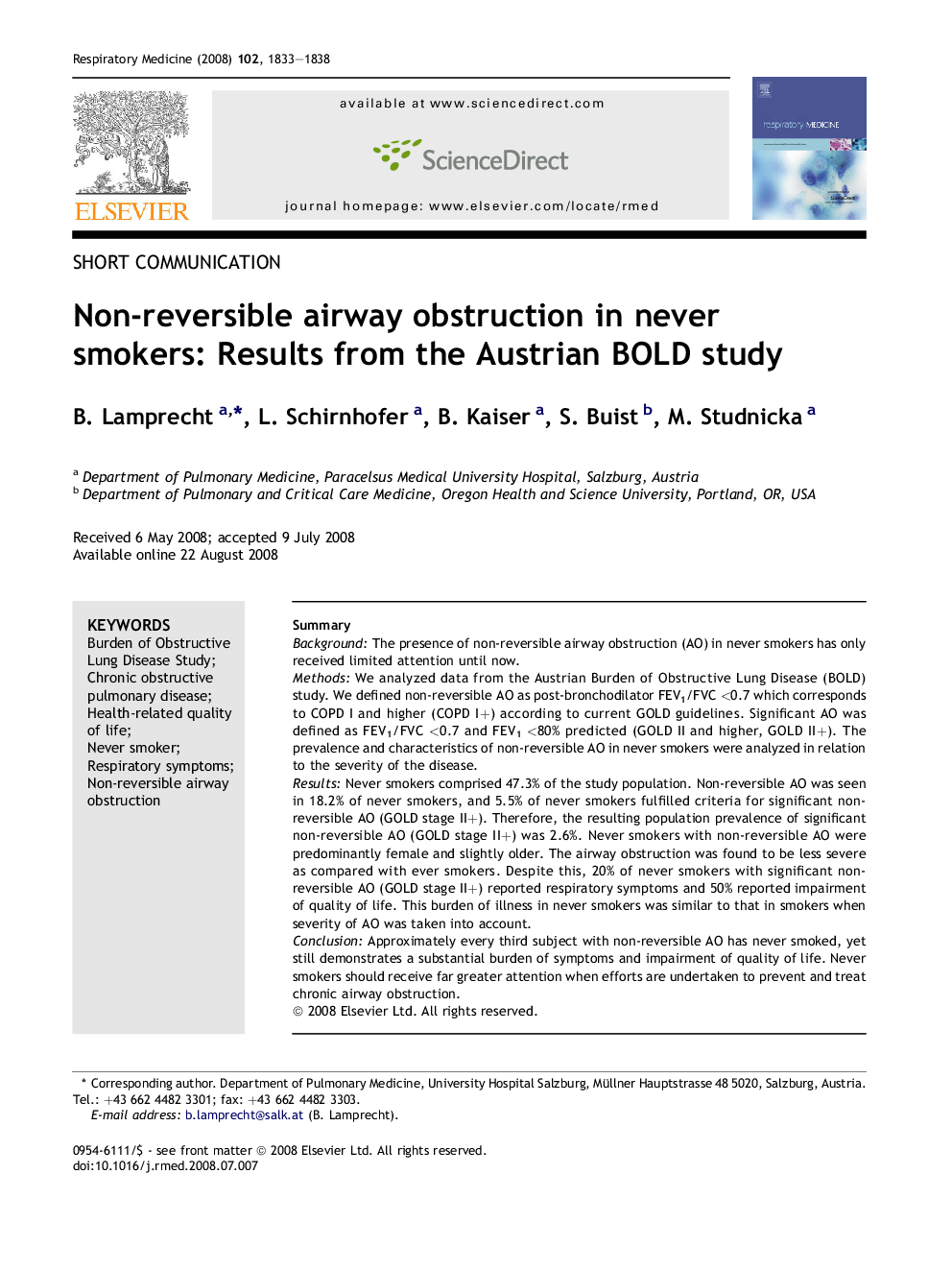| Article ID | Journal | Published Year | Pages | File Type |
|---|---|---|---|---|
| 4212219 | Respiratory Medicine | 2008 | 6 Pages |
SummaryBackgroundThe presence of non-reversible airway obstruction (AO) in never smokers has only received limited attention until now.MethodsWe analyzed data from the Austrian Burden of Obstructive Lung Disease (BOLD) study. We defined non-reversible AO as post-bronchodilator FEV1/FVC <0.7 which corresponds to COPD I and higher (COPD I+) according to current GOLD guidelines. Significant AO was defined as FEV1/FVC <0.7 and FEV1 <80% predicted (GOLD II and higher, GOLD II+). The prevalence and characteristics of non-reversible AO in never smokers were analyzed in relation to the severity of the disease.ResultsNever smokers comprised 47.3% of the study population. Non-reversible AO was seen in 18.2% of never smokers, and 5.5% of never smokers fulfilled criteria for significant non-reversible AO (GOLD stage II+). Therefore, the resulting population prevalence of significant non-reversible AO (GOLD stage II+) was 2.6%. Never smokers with non-reversible AO were predominantly female and slightly older. The airway obstruction was found to be less severe as compared with ever smokers. Despite this, 20% of never smokers with significant non-reversible AO (GOLD stage II+) reported respiratory symptoms and 50% reported impairment of quality of life. This burden of illness in never smokers was similar to that in smokers when severity of AO was taken into account.ConclusionApproximately every third subject with non-reversible AO has never smoked, yet still demonstrates a substantial burden of symptoms and impairment of quality of life. Never smokers should receive far greater attention when efforts are undertaken to prevent and treat chronic airway obstruction.
